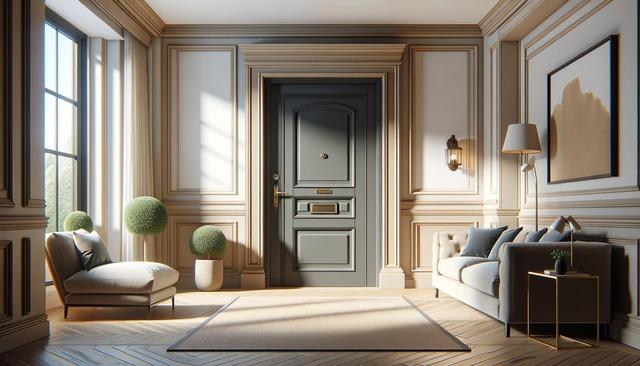Understanding the Role of Entry Doors in Home Design
The entry door is more than just a functional feature—it sets the tone for your home’s exterior and gives visitors their first impression. When selecting a front door, homeowners should consider how the door complements the architectural style of the house, whether it’s traditional, modern, or somewhere in between. Materials, color, and decorative elements all contribute to the overall look. Common materials for entry doors include wood, fiberglass, and steel, each offering different advantages. Wood provides a warm, classic appearance, while fiberglass and steel options offer durability and lower maintenance. Incorporating glass panels or sidelights can also enhance visual appeal and let in natural light without compromising privacy.
Prioritizing Security Features for Peace of Mind
Security is a top priority for any entry door. A well-constructed front door can act as a strong barrier against intrusions and external threats. Steel doors are generally known for their strength, while fiberglass doors often include reinforced cores for added protection. When evaluating security, look for features such as:
- Multi-point locking systems
- Solid core construction
- Impact-resistant glass inserts
- Heavy-duty hinges and frames
Installing a quality deadbolt and considering a smart lock system can further enhance safety. These components not only increase physical security but can also provide remote access control and monitoring, giving homeowners even more peace of mind.
Enhancing Energy Efficiency with Smart Door Choices
An energy-efficient entry door helps maintain indoor comfort and reduce heating and cooling costs. Modern front doors are often designed with insulation in mind, using materials and technologies that prevent drafts and heat transfer. Fiberglass and steel doors typically come with insulated cores, and proper weatherstripping can improve their performance even further. Key considerations for energy efficiency include:
- Low-emissivity (Low-E) glass inserts
- Energy Star certification
- Thermal break construction
- Proper installation to avoid gaps and air leaks
Choosing an energy-efficient door isn’t just good for your comfort and utility bills—it also supports a more sustainable lifestyle by reducing your home’s environmental footprint.
Balancing Style and Functionality
Finding a front door that balances style and functionality requires thoughtful planning. While appearance is important, practical elements such as door swing (inward or outward), size, and hardware placement play a big role in daily use. Homeowners can personalize their entryway by selecting from a wide range of finishes, colors, and hardware options. Some features to consider for both style and function include:
- Decorative glass or grille patterns
- Custom paint or stain finishes
- Integrated smart doorbells or peepholes
- Matching sidelights or transoms
Coordinating these elements can create a cohesive and attractive entrance that also meets all functional needs. Whether you aim for a contemporary look or a more rustic charm, thoughtful customization ensures your entry door fits your home perfectly.
Installation and Long-Term Maintenance Considerations
Proper installation is essential to ensure that an entry door performs as intended in terms of security, energy efficiency, and longevity. Even the highest-quality door can underperform if not installed correctly. Hiring a professional installer can help avoid issues such as misalignment, air leaks, or water infiltration. Additionally, entry doors require regular maintenance to keep them looking and functioning well. Maintenance needs vary by material:
- Wood doors may need periodic sealing or painting
- Steel doors benefit from rust prevention and touch-up paint
- Fiberglass doors typically require minimal upkeep
Routine inspections of weatherstripping, hinges, and locks help ensure long-term durability. Keeping your entry door in good condition not only extends its life but also maintains the security and efficiency benefits it provides.
Conclusion: Making the Right Entry Door Choice for Your Home
Choosing the right entry door involves balancing aesthetics, safety, and energy efficiency to create a welcoming and secure entrance. By considering your home’s architectural style, prioritizing robust security features, and opting for energy-efficient models, you can find a solution that fits both your practical needs and personal taste. Whether you are renovating or building a new home, investing time in selecting the right entry door can significantly enhance your home’s value, comfort, and curb appeal.




Leave a Reply